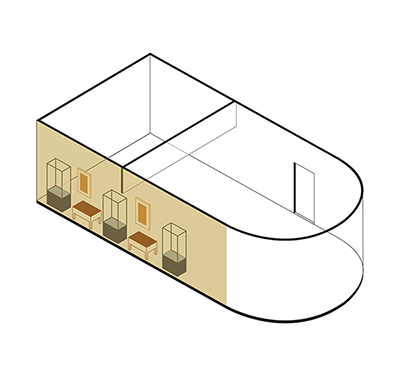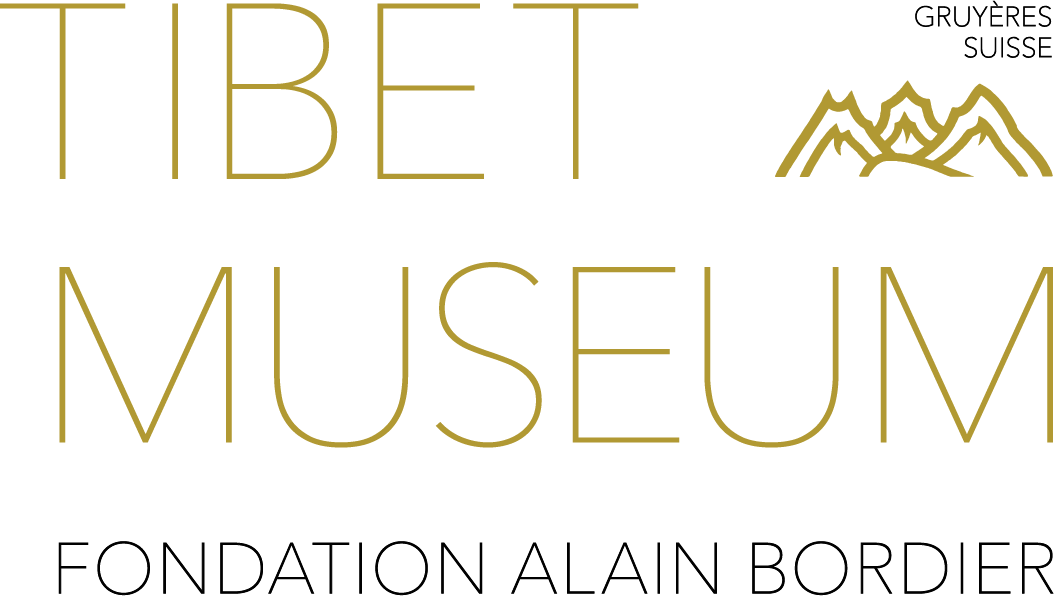Narrative painting of the life of Milarepa (Part III)
See it in the Museum

Chapel
Orientation 2
Wall object 10

ABP 032
Code: ABP 032
Country: Tibet (east)
Style:
Date: 1800
Dimensions in cm WxHxD: 50 x 65
Materials: Glue distemper on cotton
Narrative painting of the life of Milarepa (Part III)
This painting is the third in the series. In the center, the cotton-clad yogi Milarepa sits in a cave. Episodes from The Hundred Thousand Songs are displayed around him. Among the most emblematic are the conversion of disciples, interaction with local people and deities, etc. Around a snow-covered mountain, the magic duel with a Bönpo priest is represented directly under the main figure. Milarepa is seen, among other things, flying to the top of Mount Kailash. Other famous episodes are also present, including the hunter’s conversion or the meeting and subjugation of the Tsering Che Nga, the “Five sisters of long life.”
This painting is the third in the series. In the center, the cotton-clad yogi Milarepa sits in a cave. Episodes from The Hundred Thousand Songs are displayed around him. Among the most emblematic are the conversion of disciples, interaction with local people and deities, etc. Around a snow-covered mountain, the magic duel with a Bönpo priest is represented directly under the main figure. Milarepa is seen, among other things, flying to the top of Mount Kailash. Other famous episodes are also present, including the hunter’s conversion or the meeting and subjugation of the Tsering Che Nga, the “Five sisters of long life.”

